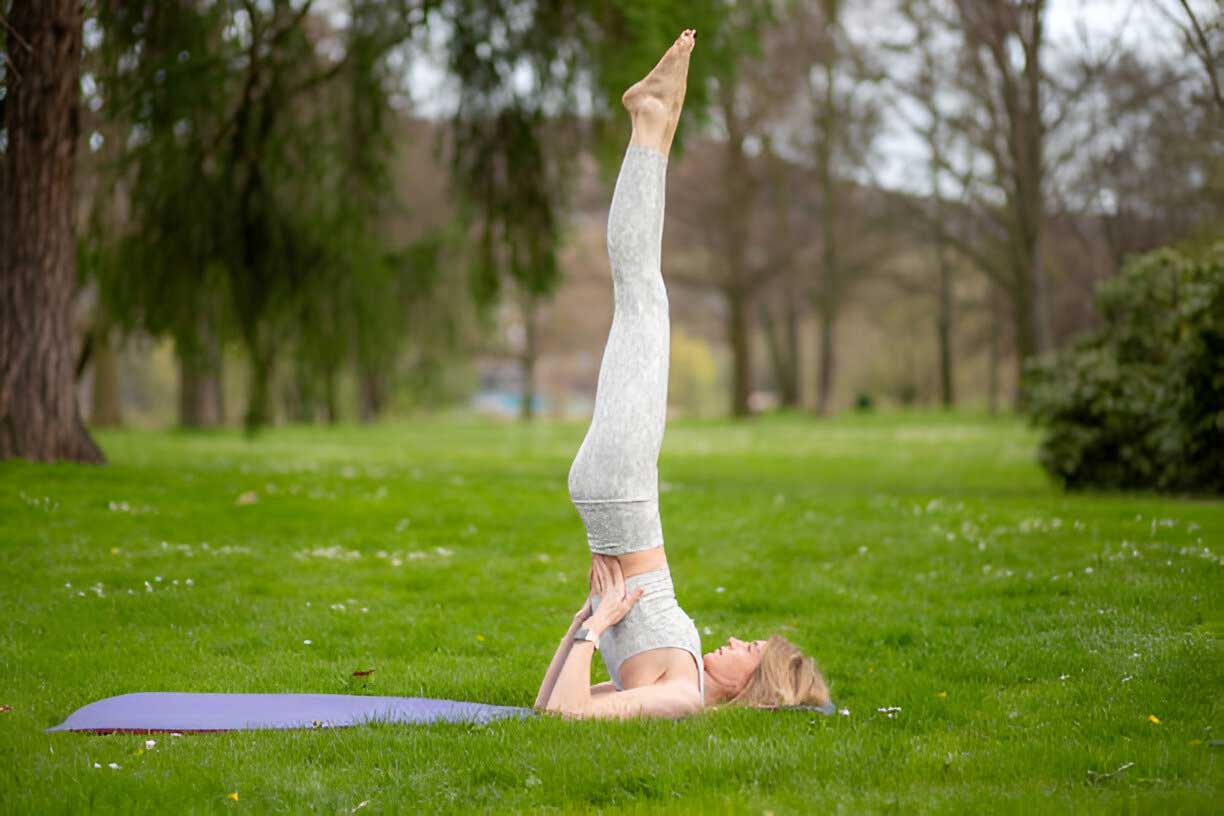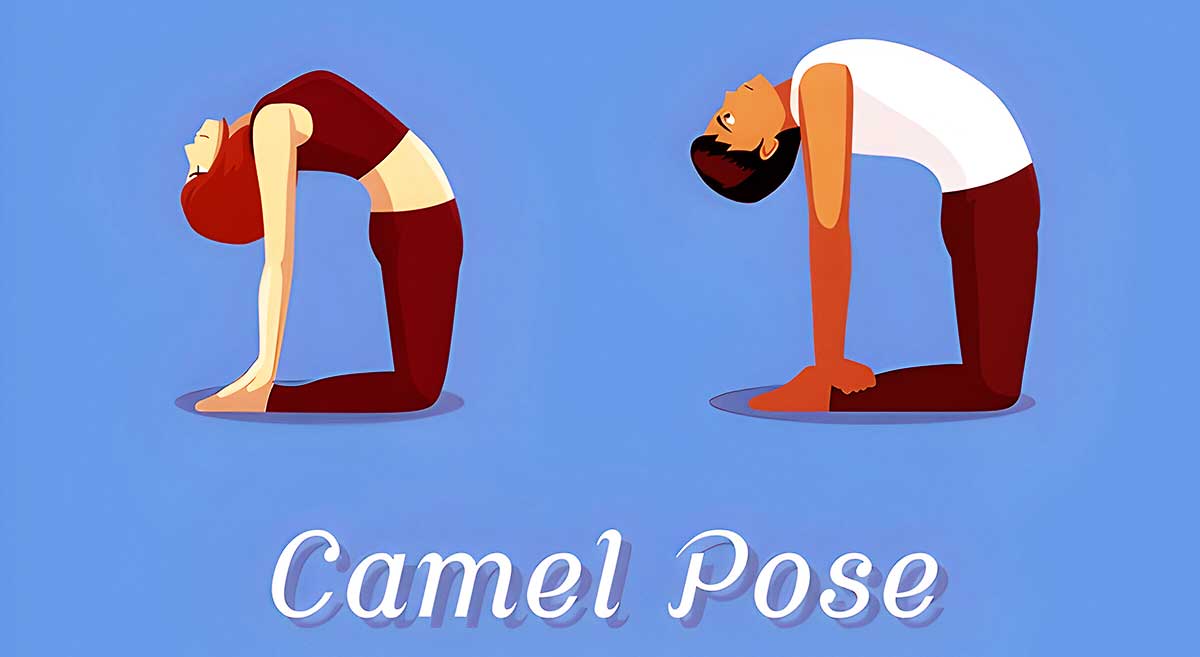Can Yoga Help in Managing Thyroid Disorders?
Thyroid disorders, including hypothyroidism and hyperthyroidism, are conditions that affect the function of the thyroid gland, a small, butterfly-shaped gland located in the neck. The thyroid gland plays a crucial role in regulating metabolism, energy levels, and overall hormonal balance. When the thyroid gland becomes underactive (hypothyroidism) or overactive (hyperthyroidism), it can lead to various health issues, including fatigue, weight changes, mood disturbances, and more. While medical treatments are often necessary for managing thyroid disorders, yoga can serve as a complementary therapy. Yoga offers a holistic approach to managing thyroid health by stimulating the thyroid gland, reducing stress, and promoting overall well-being.
This article explores how yoga can help in managing thyroid disorders and provides possible yoga practices and lifestyle changes to enhance its effectiveness.
The Connection Between Yoga and Thyroid Health
Yoga is a holistic practice that integrates physical postures (asanas), breath control (pranayama), meditation, and mindfulness to promote overall health. Practicing Yoga can positively impact thyroid health by:
- Stimulating the Thyroid Gland: Certain yoga asanas directly stimulate the thyroid gland by improving blood circulation and massaging the gland.
- Balancing Hormones: Yoga helps regulate the endocrine system, promoting hormonal balance, which is crucial for managing thyroid disorders.
- Reducing Stress: Stress is a significant contributor to thyroid imbalances. Yoga reduces stress by calming the mind and body, helping to regulate thyroid function.
- Enhancing Metabolism: Yoga increases metabolic rate, which can be particularly beneficial for individuals with hypothyroidism, where metabolism tends to slow down.
Yoga Asanas for Managing Thyroid Disorders
Specific yoga asanas are particularly beneficial for stimulating and balancing the thyroid gland. These poses help improve blood flow to the thyroid, promote glandular health, and support overall hormonal balance.
1. Sarvangasana (Shoulder Stand)
Sarvangasana, also known as the Shoulder Stand, is one of the most effective yoga poses for stimulating the thyroid gland. This inversion pose improves blood flow to the neck region, directly stimulating the thyroid and parathyroid glands.
How to Perform:
- Lie on your back with your arms by your sides.
- Slowly lift your legs off the ground, bringing them over your head.
- Support your lower back with your hands as you lift your legs and torso into a vertical position.
- Hold the pose for 30 seconds to 1 minute, breathing deeply.
- Slowly lower your legs and return to the starting position.
Benefits:
- Stimulates the thyroid and parathyroid glands
- Enhances blood circulation to the neck region
- Supports hormonal balance and thyroid function
2. Halasana (Plow Pose)
Halasana, or the Plow Pose, is another inversion pose that stimulates the thyroid gland. This pose stretches the neck and improves circulation, promoting the healthy functioning of the thyroid.
How to Perform:
- Begin by lying on your back with your arms by your sides.
- Lift your legs off the ground, bringing them over your head until your toes touch the floor behind you.
- Keep your legs straight and support your back with your hands if necessary.
- Hold the pose for 30 seconds to 1 minute, breathing deeply.
- Slowly lower your legs and return to the starting position.
Benefits:
- Stimulates the thyroid and parathyroid glands
- Improves blood circulation to the neck
- Promotes relaxation and reduces stress
3. Matsyasana (Fish Pose)
Matsyasana, or the Fish Pose, is a backbend that opens the throat and stimulates the thyroid gland. This pose is particularly beneficial for individuals with hypothyroidism.
How to Perform:
- Lie on your back with your legs extended and arms by your sides.
- Place your hands under your hips, palms facing down.
- Lift your chest and arch your back, resting the crown of your head on the floor.
- Hold the pose for 30 seconds to 1 minute, breathing deeply.
- Slowly release the pose and return to the starting position.
Benefits:
- Stimulates the thyroid gland and regulates its function
- Opens the throat and chest, improving blood circulation
- Relieves tension and reduces stress
4. Ustrasana (Camel Pose)
Ustrasana, or the Camel Pose, is a deep backbend that stretches the entire front body, including the throat and neck. This pose helps stimulate the thyroid gland and improve respiratory function.
How to Perform:
- Begin by kneeling on the floor with your knees hip-width apart.
- Place your hands on your lower back for support.
- Slowly arch your back, reaching your hands towards your heels.
- Tilt your head back, opening your throat.
- Hold the pose for 30 seconds to 1 minute, breathing deeply.
- Slowly release the pose and return to the starting position.
Benefits:
- Stimulates the thyroid gland and improves its function
- Opens the throat and chest, enhancing respiratory health
- Promotes flexibility and reduces stress
5. Setu Bandhasana (Bridge Pose)
Setu Bandhasana, or the Bridge Pose, is a gentle backbend that helps stimulate the thyroid gland by opening the chest and throat. This pose is beneficial for balancing thyroid hormones and relieving stress.
How to Perform:
- Lie on your back with your knees bent and feet flat on the floor, hip-width apart.
- Place your arms by your sides, palms facing down.
- Lift your hips towards the ceiling, rolling your shoulders underneath you.
- Clasp your hands together under your back and hold the pose for 30 seconds to 1 minute, breathing deeply.
- Slowly release the pose and return to the starting position.
Benefits:
- Stimulates the thyroid gland and regulates hormone levels
- Opens the chest and throat, improving circulation
- Relieves stress and promotes relaxation
6. Bhujangasana (Cobra Pose)
Bhujangasana, or the Cobra Pose, is a gentle backbend that stimulates the thyroid gland by stretching the neck and chest. This pose also helps improve digestion and reduce stress.
How to Perform:
- Lie on your stomach with your legs extended and feet together.
- Place your hands under your shoulders, palms facing down.
- Inhale and lift your chest off the ground, keeping your elbows slightly bent.
- Tilt your head back, opening your throat.
- Hold the pose for 15 to 30 seconds, breathing deeply.
- Slowly release the pose and return to the starting position.
Benefits:
- Stimulates the thyroid gland and regulates its function
- Improves digestion and reduces stress
- Promotes flexibility and strengthens the spine
Pranayama for Thyroid Health
Pranayama, or breath control, is a vital aspect of yoga that helps regulate the body’s energy and promote overall health. Specific pranayama techniques can benefit individuals with thyroid disorders by reducing stress, improving oxygenation, and balancing the endocrine system.
1. Ujjayi Pranayama (Ocean Breath)
Ujjayi Pranayama, also known as Ocean Breath, involves deep, slow breathing that creates a gentle sound resembling ocean waves. This technique helps calm the nervous system, reduce stress, and support thyroid function.
How to Perform:
- Sit in a comfortable position with your spine straight.
- Inhale deeply through your nose, slightly constricting the back of your throat.
- Exhale through your nose, maintaining the throat constriction to create a soft, ocean-like sound.
- Continue this breathing pattern for 5 to 10 minutes.
Benefits:
- Calms the nervous system and reduces stress
- Supports thyroid function and balances hormones
- Promotes mental clarity and relaxation
2. Nadi Shodhana (Alternate Nostril Breathing)
Nadi Shodhana, or Alternate Nostril Breathing, is a balancing pranayama technique that helps regulate the flow of energy in the body. This practice can benefit individuals with thyroid disorders by promoting hormonal balance and reducing stress.
How to Perform:
- Sit in a comfortable position with your spine straight.
- Close your right nostril with your thumb and inhale deeply through your left nostril.
- Close your left nostril with your ring finger and exhale through your right nostril.
- Inhale through your right nostril, close it, and exhale through your left nostril.
- Continue this alternate nostril breathing for 5 to 10 minutes.
Benefits:
- Balances the flow of energy in the body
- Promotes hormonal balance and supports thyroid function
- Reduces stress and enhances mental clarity
Meditation and Mindfulness for Thyroid Health
Meditation and mindfulness practices are essential components of yoga that help calm the mind, reduce stress, and promote emotional well-being. These practices can be particularly beneficial for individuals with thyroid disorders, as stress is a significant contributor to thyroid imbalances.
1. Mindfulness Meditation
Mindfulness meditation involves focusing on the present moment and observing your thoughts and sensations without judgment. This practice helps reduce stress, improve mental clarity, and support overall health.
How to Practice:
- Sit in a comfortable position with your spine straight.
- Close your eyes and focus on your breath, observing each inhalation and exhalation.
- If your mind wanders, gently bring your attention back to your breath.
- Practice mindfulness meditation for 10 to 20 minutes daily.
Benefits:
- Reduces stress and promotes emotional balance
- Supports thyroid function and overall health
- Enhances mental clarity and relaxation
2. Guided Visualization
Guided visualization is a meditation technique that involves imagining positive, healing images to promote relaxation and well-being. This practice can help reduce stress and support thyroid health.
How to Practice:
- Sit or lie down in a comfortable position and close your eyes.
- Imagine a warm, healing light surrounding your thyroid gland, promoting balance and health.
- Visualize the light spreading throughout your body, bringing relaxation and well-being.
- Continue this visualization for 10 to 20 minutes daily.
Benefits:
- Promotes relaxation and reduces stress
- Supports thyroid function and hormonal balance
- Enhances emotional well-being and overall health
Lifestyle Changes to Support Thyroid Health

In addition to yoga and pranayama, certain lifestyle changes can support thyroid health and complement your yoga practice.
1. Balanced Diet
A balanced diet plays a crucial role in supporting thyroid health. Include foods rich in iodine, selenium, and zinc, such as seaweed, Brazil nuts, and pumpkin seeds, to promote thyroid function. Avoid processed foods, excessive sugar, and refined grains that can disrupt hormonal balance.
2. Regular Exercise
Regular physical activity, in addition to yoga, helps maintain a healthy weight, improve metabolism, and reduce stress. Incorporate aerobic exercises like walking, swimming, or cycling into your routine to support overall health.
3. Adequate Sleep
Adequate sleep is essential for maintaining hormonal balance and supporting thyroid health. Aim for 7 to 9 hours of quality sleep each night to promote overall well-being.
4. Stress Management
Managing stress is crucial for individuals with thyroid disorders. In addition to yoga and meditation, consider incorporating relaxation techniques such as deep breathing, journaling, or spending time in nature into your daily routine.
Conclusion
Yoga offers a holistic and effective approach to managing thyroid disorders by stimulating the thyroid gland, reducing stress, and promoting overall well-being. By incorporating specific yoga asanas, pranayama techniques, and meditation practices into your daily routine, you can support thyroid health, balance hormones, and enhance your overall quality of life.
In addition to yoga, adopting a balanced diet, regular exercise, adequate sleep, and stress management practices can further support thyroid health and complement your yoga practice. Whether you’re dealing with hypothyroidism, hyperthyroidism, or simply looking to maintain optimal thyroid health, yoga provides a natural and effective way to promote well-being.
With consistent practice and a mindful approach, yoga can become a powerful tool in your journey toward better thyroid health and a balanced, harmonious life.









